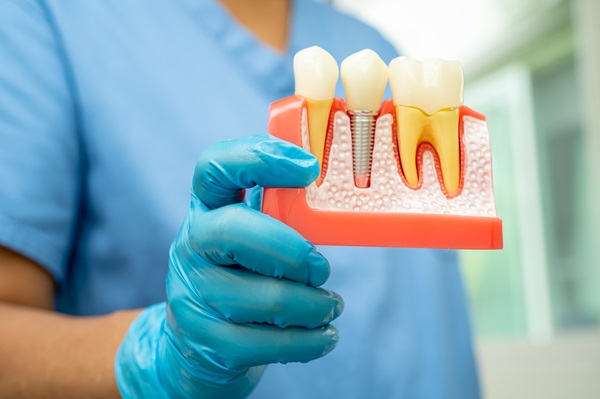Dental Implants: What to Expect After the Surgery?

If you’re having trouble chewing food well because of a missing tooth, one common solution your dentist may recommend is to get dental implants. Dental implants are hailed by many patients because of their ability to restore the function and appearance of a missing tooth. They are also permanent and natural-looking and are great alternatives for dentures or bridges. But unlike those two, dental implants need surgery to get it done.
And because it is a surgery, it also needs a little TLC once the surgery is done. Here’s what you can expect after dental implant surgery and how our experts at Whitehorse Dental can help you take care of yourself during the healing process.
How Long Is It to Recover from Dental Implant Surgery?
While dental implants offer a permanent solution to missing teeth, your recovery time would depend on the type of treatment you receive and your body’s natural response to healing.
However, the whole dental implant process could take 3 – 12 months to complete, depending on how complex your case is. Sometimes, when other patients get a bone graft or if there are multiple teeth implanted, it can also determine how long your healing process would last.
Dental Implant Healing Process
First Stage: Immediate Post-Surgery
Right after the dental implant surgery, you might feel some discomfort or numbness due to the anaesthesia that has been administered before the operation. Don’t fret because this feeling is totally normal and should subside gradually.
Your dental implant dentist will also guide you with specific post-operative instructions relating to your case, but here are some general guidelines:
- Pain Management: While experiencing some pain or soreness should be expected right after the surgery, it is still important that you monitor any irregularities. Don’t worry because your dentist will likely prescribe a pain medication to help manage your discomfort.
- Swelling and Bruising: Swelling and bruising around the surgical site are also common effects of the operation. Reduce the swelling by applying ice packs to the affected area.
- Bleeding: Some bleeding is also expected to happen on your newly operated implant. When you do get bleeding, bite down gently on a gauze pad or cotton to control it.
- Rest: Rest is one of the most important things you need to do after your surgery. Give yourself ample time to rest and avoid strenuous activities as this might tear up the surgical site.
- Prevent infection: While you might think it’s okay to skip brushing, it is still important to get your teeth protected from infection. Brush and gently clean the surgical site as instructed by your dentist. Avoid using mouthwash or rinsing vigorously.
- Protect the implant: As much as you want to try out the effectiveness of your dental implant right then and there, it’s still important to give it time to adjust to your oral environment. As a rule, try to avoid chewing on the surgical site to give it time to heal. Stick to a soft diet for at least 1 to 2 weeks, then adjust according to your comfort zone.
Second Stage: Osseointegration
After your implant surgery, it’s important for the dental implant to adjust to your mouth and, most importantly, to your jawbone. This process is called osseointegration. This is a remarkable process where the dental implant forms a strong, stable bond with the jawbone. This is the foundation for the long-term success of your dental implant.
During this time and while the implant is healing, your dentist will let you wear a temporary restoration to protect the implant site and maintain your smile. That’s why it is important to avoid putting excessive pressure on the implant during this time.
Third Stage: Abutment and Crown
Once the implant has fully integrated with your jawbone, a small titanium post will be attached to the implant called an abutment. This abutment acts as a bridge between the implant and the final restoration. The abutment typically requires a short healing period before the final restoration can be placed.
The final restoration is typically done with a dental crown, which is custom-made to match your natural teeth in colour, shape, and size. It will also be securely attached to the abutment to complete the whole dental implant process.
Overall, it is important to understand that the entire dental implant process can take quite some time before it becomes completed. However, after all the long wait and healing is done, the result you will find at the end of it all is a beautiful, functional, and long-lasting replacement for your missing teeth.
A Bright Smile That Would Last a Lifetime
Understanding what to expect after dental implant surgery can help you navigate the recovery process with confidence and peace of mind. Enjoying your dental implant for a long time does not stop after it has already been placed on your jaw—that’s why it’s still essential to follow your dentist’s instructions and maintain good oral hygiene to let your implant form a strong bond with your whole mouth.
If you’re looking for a more permanent option to restore your smile, maybe a dental implant is right for you. Talk to our dentists at Whitehorse Dental. Our experienced team will support you from consultation down to the very last stage of your dental implant procedure. Book your consultation or follow-up appointment today to ensure your recovery is on track and your smile stays healthy and beautiful.

